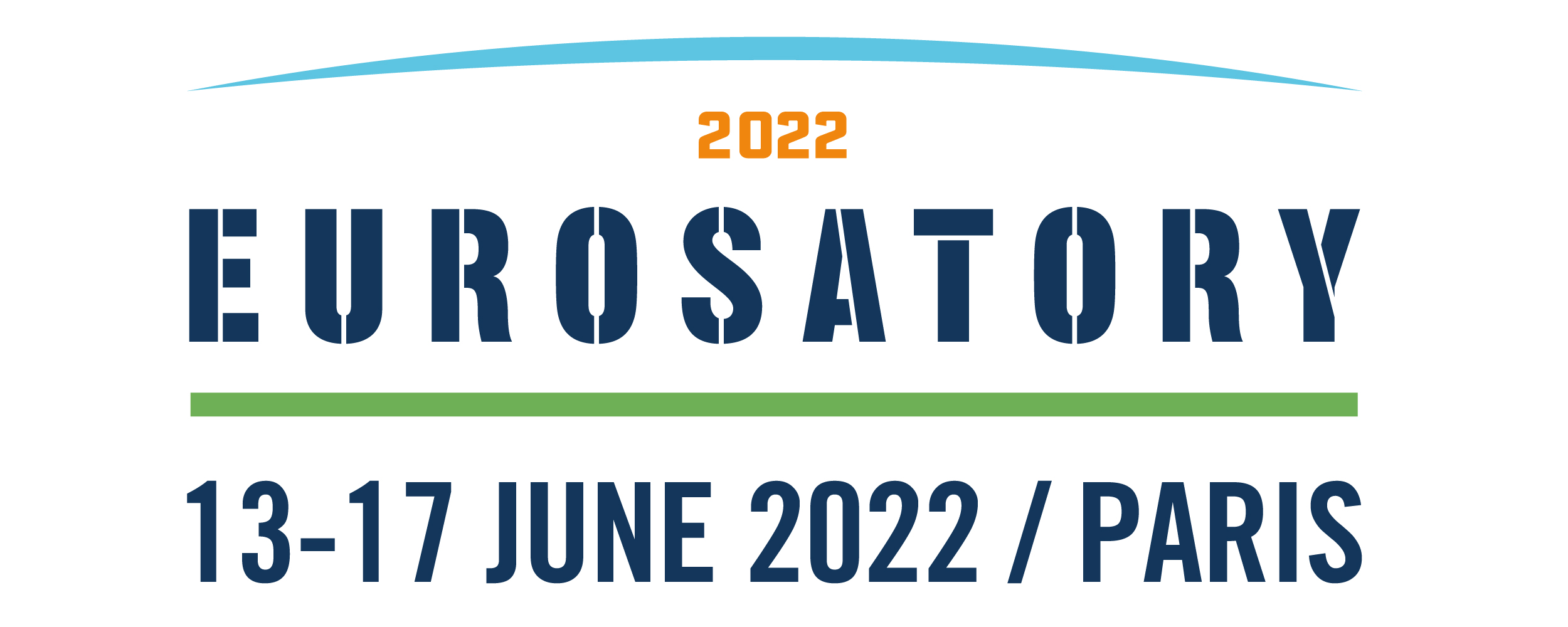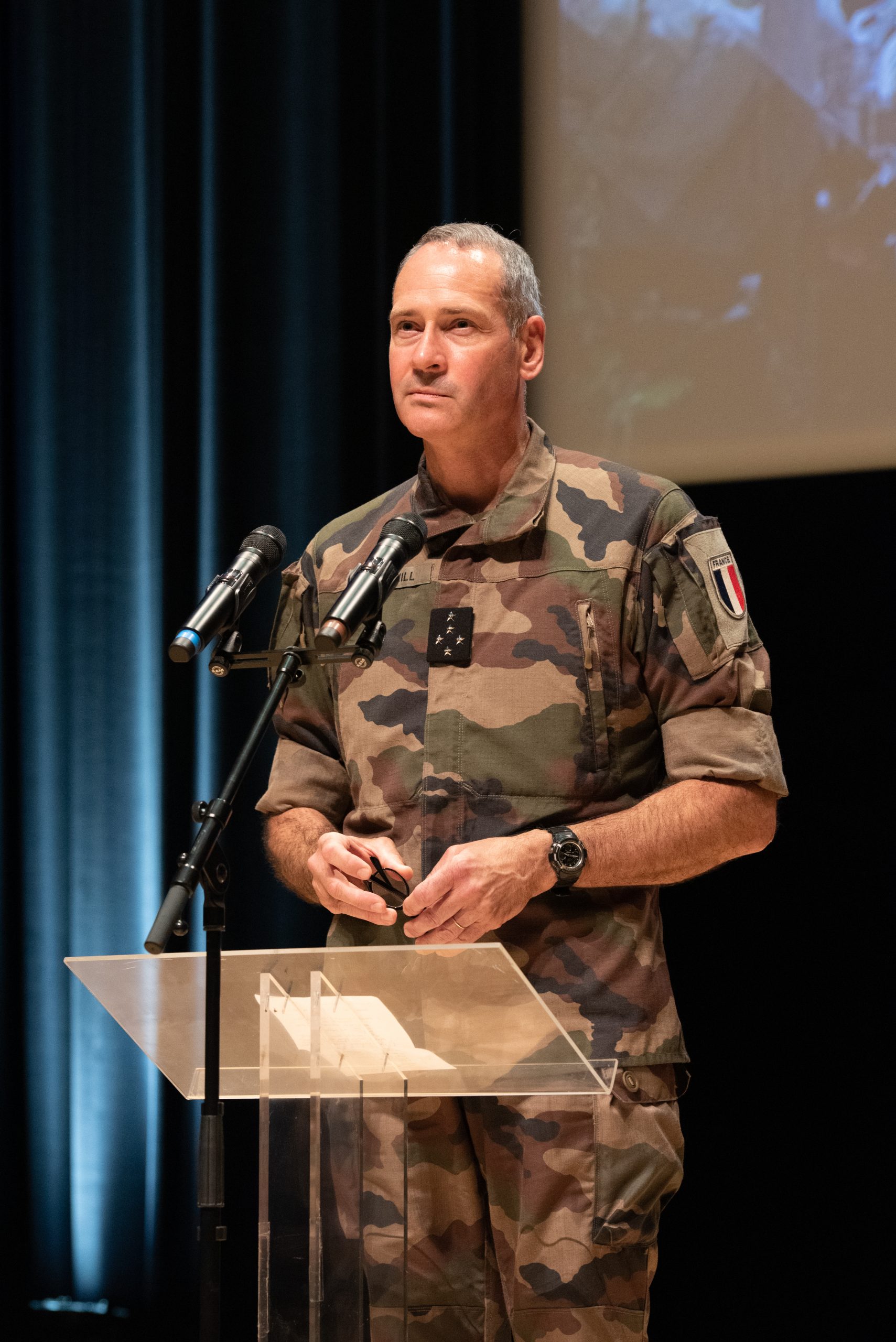Key issues at the Eurosatory show for the French Army, influence of the war in Ukraine on the Scorpion and Titan programmes, importance of artillery and drones in modern warfare, prospects for European defence… General Pierre Schill, Chief of Staff of the French Army, covers a wide range of issues in an exclusive interview.
By Joseph Roukoz
General, what are the issues at Eurosatory 2022 for the French Army?
First of all, after a four-year wait, it is a satisfaction that the 2022 edition is taking place. Eurosatory offers a special setting for discussing and reflecting on defence issues. This year, the show opens its doors in the very particular context of the Russian offensive in Ukraine.
Europe was experiencing an episode of lasting peace. We certainly belong to one of the richest generations in history and our continent is one of the richest spaces on the globe. Many thought they could close their eyes and ignore the threats that weighed on this opulence and came to ask themselves: “What’s the point of having an Army?.” Now war is a daily concern and the conflict unfolding in Ukraine gives a new dimension to the show.
The hypothesis of a major conflict involving our country is once again credible. Given the extent of the destruction of equipment observed in a few months of conflict, the regeneration of equipment appears to be one of the issues in this war. I see two challenges, that of quantities – having, for example, the number of armoured vehicles sufficient to engage the enemy – and that of duration – availability of these armoured vehicles over time. The armed forces cannot meet these challenges alone. This is why exchanges between armed forces and industry are essential during the show.
To what extent can the events in Ukraine influence the Scorpion programme or the Titan project (whose results should be visible from 2030 and beyond)?
The events in Ukraine confirm that the ambition of Operational Superiority adopted by the French Army for its strategic plan is the right one. The objective is to build the Army that France needs, ready to take part in all conflicts including major engagement. This plan aims in particular to have the capabilities allowing our soldiers to outclass their adversaries.
The Scorpion programme, the first phase of Army modernization, is continuing, and the Titan project, which will be the next phase, is designing future capabilities by 2040 in a coordinated and coherent manner. Since autumn 2021, with the deployment of Griffons in the Sahel, Scorpion is an operational reality. However, we are only at the beginning of this programme: only 10% of total deliveries have been made at this stage. The year 2022 is a crucial year for the continuation of this effort straddling two multiyear military spending bills: future deliveries will make it possible to reach 18% of the Scorpion target by the end of 2022 and to order 500 additional armoured vehicles, representing a further 15% of total programme vehicles.
The lessons of the Ukrainian conflict make it possible to identify certain capacities that are limited or need to be acquired. It is imperative to strengthen management capabilities in the third air-land dimension at greater tactical depth, which is based on the effectiveness of the sensor/effector/decision loop triad. Ground-to-air defence, anti-drone and counter-battery systems are essential.
What lessons do you draw from the war in Ukraine and how are they taken into account by the French Army, particularly in its operational preparation?
Over the past decades, in Afghanistan, the Central African Republic and the Sahel, the Army has acquired a great deal of operational experience. Hardening the Army does not mean questioning this experience but giving itself the ability to move to a higher level and prepare for tougher fights, facing a more dangerous adversary.
The Army’s operational superiority plan is based on the objective of having men ready for future shocks. In my opinion, this is fundamental.
According to some estimates, between 30,000 and 40,000 Russian soldiers are no longer fit to fight. Beyond the human losses, one must imagine the impact not only within the units but also on Russian society. Even sources of information accessible to the general public show that the morale of certain Russian units may have been undermined, contributing to severe tactical setbacks. Conversely, we know that cohesion and national support gave Ukrainian units increased operational effectiveness. These elements remind us of the importance of the hardening, realism and intensity of training, of the significance attached to the mission and of the confidence in command, which is based on the quality of the training provided in our units and our military schools.
Furthermore, it is possible to see the effects of information warfare on soldiers and opinions through the use of images of prisoners and even families. Already in 2014, families of Ukrainian soldiers from the same unit had simultaneously received an SMS announcing their death, prompting return calls from these same relatives, thus making it possible to identify their position through the cluster of signals and triggering artillery fire. Hardening the Army means hardening the entire “land community” and also protecting families, including their digital defence environment and their protection against subversion.
War is a social phenomenon. Political will and popular support build a foundation for an armed force.
The French Army is also increasing its capabilities for action in the electromagnetic and information fields, in the land, air and cyber domains, in particular by deploying its drones and by seeking an ever better combination of joint effects. In this context, targeting capabilities – intelligence gathering, deep strikes, assessment — are the focus of renewed attention.
Finally, the Army is training to operate in degraded environments, without permanent air or information superiority and in deliberately reduced technical conditions for “decoy” purposes.
All of these actions contribute to the preparation of a more seasoned combatant, ready for engagement in operational conditions close to those of the Ukrainian conflict.
Under the Scorpion programme, while waiting for the future MGCS, the Leclerc tank will be subject to an “upgrade”. What will be the characteristics of this future battle tank?
The Leclerc tank, which entered service in the early 1990s, is being upgraded. The aim is to integrate the tank into the Scorpion “information management bubble” and improve its performance, especially in the areas of protection and aggression. This mid-life upgrade should also make it possible to keep the Leclerc operational until the arrival of its successor, the MGCS.
Current events confirm that the « battle tank » capability remains essential for our toughest engagements, because it determines the aptitude for encounter combat and for regaining the initiative. While taking into account the dialectic of sword and shield in the coming decade, the Leclerc tank will be equipped with new aggression and protection capabilities. Its successor, MGCS, will not be a « simple » tank but a « system of systems » constituting a new approach to the architecture of contact combat. It could thus be composed of several platforms, carrying different effectors (large calibre gun, missile, etc.), some unmanned and accompanied by remote aerial sensors. MGCS will pave the way for new military capabilities in terms of effects, robotization and armour. In addition, the configuration as a “system of systems” will allow the integration of new technologies that will be developed during the 21st century. Finally, the cost and the employment constraints of the MGCS must be kept under control.
The war in Ukraine reveals the capabilities of the Russian Army in the field of artillery, used intensively. What are the future evolutions of French artillery?
First of all, I want to emphasize the very high quality of French artillery. Its effectiveness was illustrated in Iraq from 2016 to 2019 against Daesh, with more than 20,000 155mm rounds fired, achieving decisive effects on the enemy and limited impacts on the environment. Even if it is a little older, the contribution of our long-range artillery was also decisive during Operation Serval in Mali in 2013. These effects are produced by the equipment we have, Caesar and LRU, but also the doctrines , training, chains of command and especially the men who serve them.
The modernization of our artillery has been initiated with the Scorpion programme and it will continue in the future with Titan. The first deliveries of Griffon Mepacs carrying 120mm mortars will take place in 2024. These vehicles will give Scorpion units even greater flexibility in terms of fire support. They will be particularly reactive, able to execute complex fires, with extremely short implementation times and a high rate of fire — up to 10 rounds per minute per system. As for the new-generation Caesars, they will be delivered by 2025. Compared to the current Caesars, they will offer enhanced protection and improved mobility. The accuracy of their gun, already remarkable, should also be further optimized. The firing capacity of the Caesar NG will be diversified with the arrival of a first precision ammunition, allowing flexibility of employment of the Caesar in an urban environment, for example.
Work is underway to define the future of long-range artillery. The evolution of conflicts underlines the need for rapid modernization of this component. In a context of generalization of anti-access area-denial (A2AD) systems, it is essential to be able to fire from greater depth, with an increased number of launchers, to shape the adversary and bring it within range of melee units before the shock of contact combat. The future capability will also be able to participate more in joint strikes, to break up common enemy positions on the scale of the theatre of operations. It will thus facilitate the engagement of the other components, e.g. by allowing precise deep strikes on enemy air defence systems to reduce the vulnerability of the air component.
Target acquisition capabilities will be modernised in step with the introduction of these new artillery strike capabilities. The SDT drone in particular will complement existing capabilities — e.g. counter-battery (COBRA) or human research — which are also being modernized. Future long-range strike will also rely on joint intelligence capabilities, such as special forces and space imagery.
Artillery helps to preserve the freedom of movement of manoeuvre units and one can see that air defence systems in particular contribute to achieving anti-access area-denial (A2/AD). What are the challenges of A2/AD?
Faced with the evolution of the air threat and the growing role played by drones, air defence systems, particularly for lower altitudes, are once again becoming a key element in the preservation of combat potential and more broadly the freedom of action of ground components. Recent conflicts have shown this.
During the conflict in Nagorno Karabakh, Armenian forces faced an effective combination of mini-drones, armed tactical drones and remotely operated munitions. Very well integrated into the Azeri manoeuvre, this combination of capabilities allowed the neutralisation of Armenian air defences composed of systems that had not been optimized against these threats. It also played a decisive role in breaking their defensive lines, in particular by guiding artillery fire and by precision strikes in contact and in depth.
In Ukraine, the base of the Ukrainian air defence – fixed systems of aerial surveillance of the territory, air bases – was targeted from the first days of the conflict by cruise and ballistic missile strikes. Russian and Ukrainian manoeuvre units not covered by air defence systems were neutralised on roads by combat helicopters and enemy close air support aircraft. Drones of all kinds have been used to guide strikes on forces in contact as well as in depth.
Our ground-to-air defence, in particular at lower altitudes, must now be modernized and completed. The work in progress on this subject carried out with the General Staff of the Armed Forces (EMA), the other branches and the DGA defence procurement agency aims to define the timetable and the future articulation. Performance will depend not only on the quality of its detection, command and neutralisation components, but also on the number of systems deployed. As the aerial threat at low altitude is increased tenfold by the use of drones, this field of combat is becoming essential. Beyond performance, particular attention will be paid to the financial sustainability of the solutions that will constitute this future low-level air defence system, including against low-cost saturating threats. The future air defence system will have to, in a way, establish an economic rationality between the cost of attack (or of observation prior to action) and that of defence. Promising technologies will contribute to this, such as directed-energy weapons, which will in the long term advantageously complement guns and missiles.
Armed tactical drones have proven to be an essential tool in high-intensity combat. In view of the uses and capabilities of the drones employed during the Russian-Ukrainian war, does the French Army plan to review its drone development programmes and strengthen its capabilities in this regard?
For several years now, the French Army has been anticipating the return of high-intensity conflicts, and preparing for the possibility of a major engagement.
Its objectives with regards to drones were updated in 2019 in a document called “ambition drones”.
The Army’s strategic plan establishes an objective of densifying the air-land bubble in order to ensure a coherent and large-scale integration of drones in operations, in particular by establishing appropriate training and taking into account aviation safety at all levels.
While the French Army has been using drones for 60 years, the scale and purpose of their employment are changing radically. Drones are used in all operational functions of the Army, with the aim of forming a complete and diversified system. The land forces will be equipped with around 3,000 air vehicles by the end of 2023. The smallest drones (nanodrones and microdrones) will provide reconnaissance and surveillance functions, in order to protect units and detect threats within range of each tactical echelon. The war in Ukraine confirms the need already identified several years ago to acquire short- and long-range remotely operated munitions, which are microdrones equipped with an explosive charge designed to detonate on impact against their target. In the higher tiers of mini-drones or tactical drones, operated by specialists, we are pursuing a long-term effort with armament operations launched a long time ago. Some of these tactical drones will be armed. The necessary developments are in progress.
However, drones have not become the weapon of tactical supremacy. Countermeasures exist (air defence, self-defence) or are undergoing rapid development (counter-drone systems).
Faced with the serious threat posed by enemy drones, appropriate defence systems must be implemented, in particular by re-activating basic camouflage measures, by re-learning dispersion, and by training to fight without having permanent control of air supremacy.
The advantages and risks of drones are taken into account within the framework of a global approach combining all the tactical components.
8/ Is European defence still possible? Is complementarity between the EU and NATO possible?
At the end of March, Strasbourg hosted for two days of exchanges the European Army Chiefs of Staff as well as the American General Christopher CAVOLI, since appointed Supreme Commander of the Allied Armed Forces in Europe by the North Atlantic Treaty Organization. All the Chiefs of Staff underlined the epiphany experienced in each country in the wake of the Russian invasion. There is therefore a “Ukraine moment”, for Europe in general and for European land forces in particular, which presents opportunities and challenges. This moment is marked by announcements of budget increases and changes of scale: we might mention the historic announcement by Mrs Van der Leyen on the European Union’s decision to allocate €450 million to supply weapons to Ukraine; who would have imagined, only five months ago, that the German Chancellor would announce the release of €100 billion as an emergency measure for rapid modernization of the German armed forces?
Faced with the revival of the great powers, it is clearly necessary to act on a European scale. « Either Europe faces up, or Europe fades away, » said Florence Parly. For European land forces, an opportunity is opening up to cooperate more, increase operational and capability interoperability and contribute to the defence of Europe.
My role as Chief of Staff of the French Army is to propose, following a bottom-up logic, military options to the Chief of Staff of the Armed Forces, which he can present to the President, and to ensure the implementation of the decisions taken.
On the military level, the effective and concrete levers for making progress in the defence of Europe relate to interoperability, that is to say the ability to plan, command, train and fight with our allies. The situation on the eastern flank of Europe and also in the south make it necessary to think ahead. In the south, the situation in the Sahel will be a security concern for many years. We must not fall victim to a Ukrainian tunnel vision; we must maintain a higher-level strategic view. I identify three areas of progress.
The first is that of capability interoperability: in orders of magnitude, there are around 20 tank and aircraft models in Europe, more than 150 major types of armament, not to mention the diversity of transmission systems which does not facilitate the interoperability of chains of command. Capability interoperability is the first relevant lever to improve the effectiveness of common engagements. There are success stories in this area. In 2018, the agreement was signed on the motorised capability (CAMO) of the Belgian Army. An agreement which includes two dimensions: the purchase by Belgium of French armoured vehicles from the Scorpion programme (382 VMBR Griffons and 60 Jaguar tanks) and a transformation of the Belgian Army which mirrors that carried out by the French Army to organize combined arms battle groups around the Scorpion combat and information management system. CAMO and the expansion of the Scorpion community to other European partners undoubtedly contribute to strengthening interoperability with our partners and allies, and therefore the defence of Europe; I am convinced of that. This capability area is an area of progress within the reach of the EU.
Secondly, the interoperability of military command structures and systems: during the forum of European Army Chiefs of Staff, one of my counterparts had this formula: « it is easier for an individual to cross Europe than for a military convoy responding to a security emergency », while regretting the difficulties due to standards and coordination which constrain the movement of forces by land. This may be a detail, but if Europe wishes to gain in responsiveness and credibility, the transfer of troops and equipment across the continent can be improved by developing a capacity for planning or even conducting operations, by strengthening command structures. This is an area of progress at the meeting point between the competences of the EU – freedom of movement – and NATO, which is a machine for creating interoperability through standards and procedures.
Finally, operational interoperability: to fight together, you have to train together and be able to command together. This was recently the case in the context of the Brilliant Jump and Cold Response exercises which have just taken place in Norway. The French Army is working on the nature of its exercises to prepare for high intensity. This is the ambition of the major full-scale exercise, Orion 2023. This area of operational interoperability is NATO’s area of excellence.
Ultimately, the EU and NATO enable France to demonstrate its strategic solidarity on the continent by meeting the requirements of its alliances, defence agreements and strategic partnerships, in particular by guaranteeing its ability to engage as a framework nation within a coalition.









